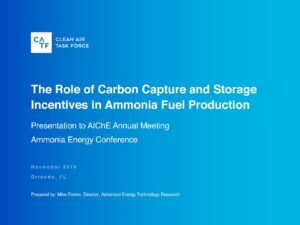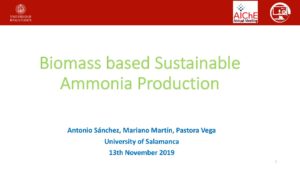Presentation
Ammonia – Could it replace HFO/LSFO?
The core of this presentation deals with the nature of ammonia, its natural characteristics that make it a future fuel solution candidate, the safety measures that need to be applied in order to carry it on board without endangering lives, environment & property, as well as whether this would be a feasible and cost- or risk-effective solution. For a long time, a lot of discussions have been centered around this subject, now bringing it to the immediate forefront & creating various questions that we will aim to answer to the interested individuals’, ship-managers’, businesses’, ship-owners’ and corporations’ satisfaction. Lloyd’s Register –…






